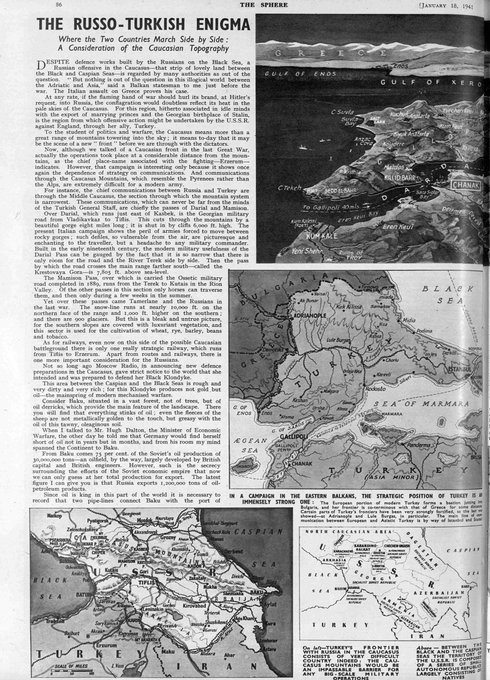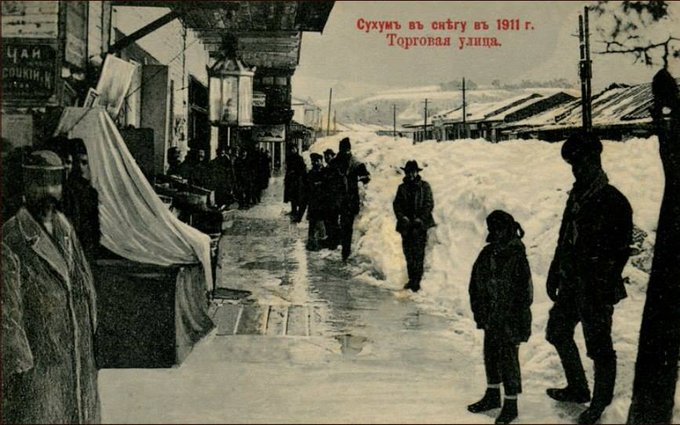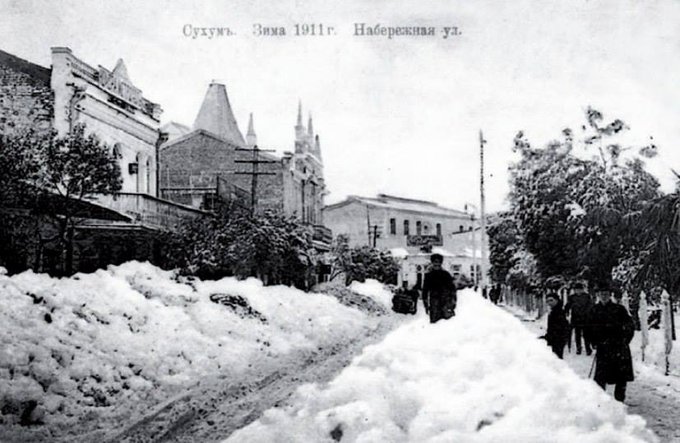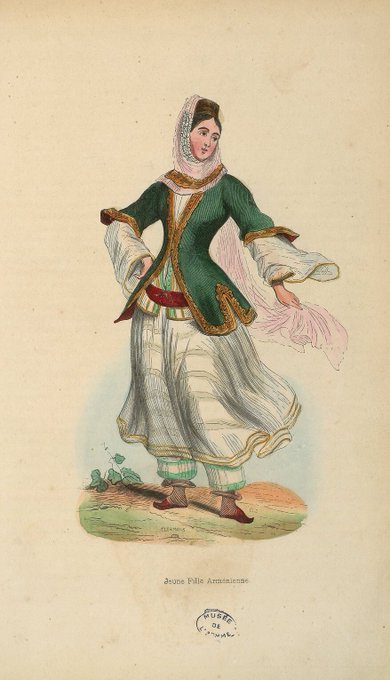"Teflis, capitale de Géorgie" [#Tbilisi, capital of #Georgia] (1717), by Joseph Pitton de Tournefort (1656-1708), French botanist.
"Ethnographical Map of the Eastern #Caucasus" | taken from page 413 of 'A Trip through the Eastern Caucasus, with a chapter on the languages of the country ... With maps, etc' (1889) by John Abercromby, 5th Baron Abercromby (1841-1924), Scottish soldier and archaeologist.
"#Circassian War-Boat" | 'Three Voyages in the Black Sea to the Coast of #Circassia' (1837), by Taitbout de Marigny.
“Hadji Ghezil Beg [Tuguzhuko Sheretluko Kyzbech], the lion of #Circassia” | “Journal of a residence in Circassia during the years 1837, 1838, and 1839” by James Stanislaus Bell (1796-1858).
“The Russo-Turkish Enigma - Where the Two Countries March Side by Side: A Consideration of the Caucasian Topography” | The Sphere - January 18, 1941 #caucasus
"#Circassia and the #Circassians" | The Penny Magazine. (April 14, 1838). #caucasus
#Sukhum: Big snow of 1911. In 1911, a natural disaster has occurred in #Abkhazia. Unprecedented heavy snow up to 2.5 m caused an enormous damage to the population and nature of the region. See https://t.co/d71LoF60i7
1. Map of the #Caucasus and the rout of the Scientific Mission by Ernest Chantre (1881).
2. The ethnographic map of the Caucasus, based partly on the researches of Ernest Chantre (1887).
Ernest Chantre (1843-1924) was a prominent French archaeologist and anthropologist.
1. #Armenian
2. #Georgian
3. #Kabardian (#Circassian) Prince
By Adolphe François Pannemaker
Belgian engraver (1822-1900).



















